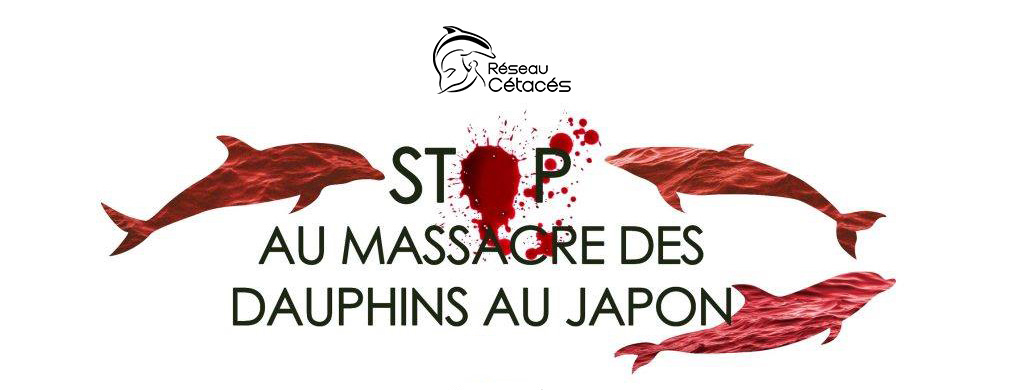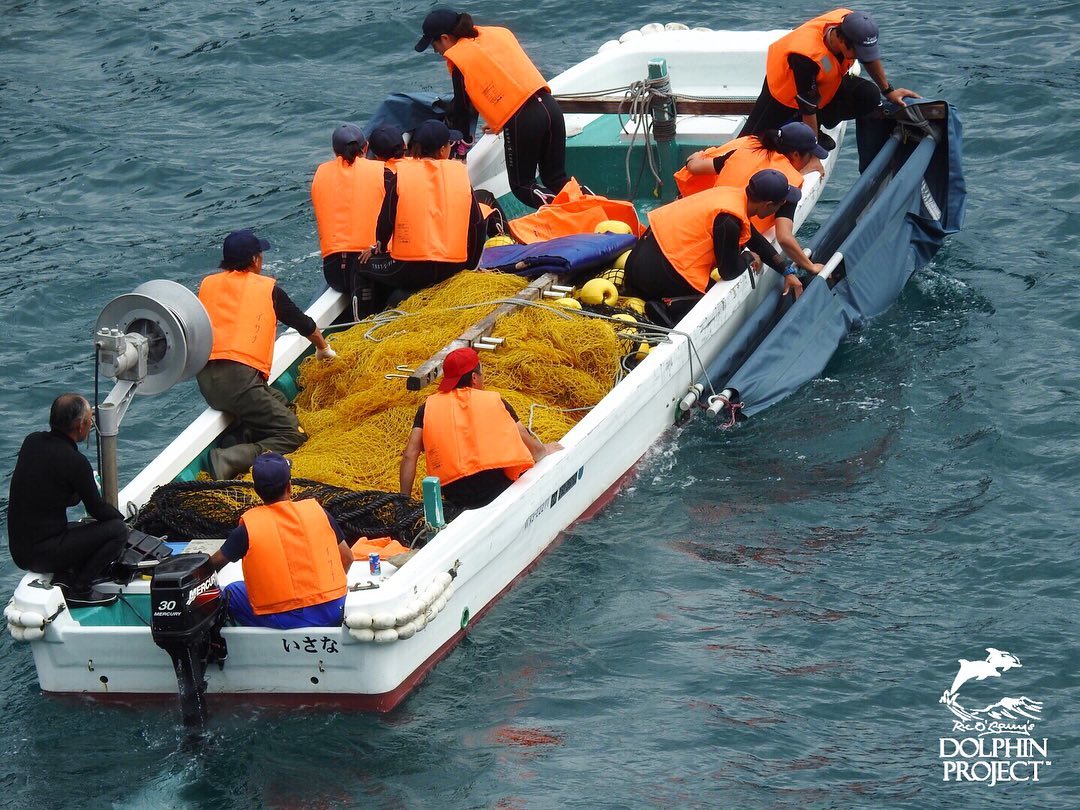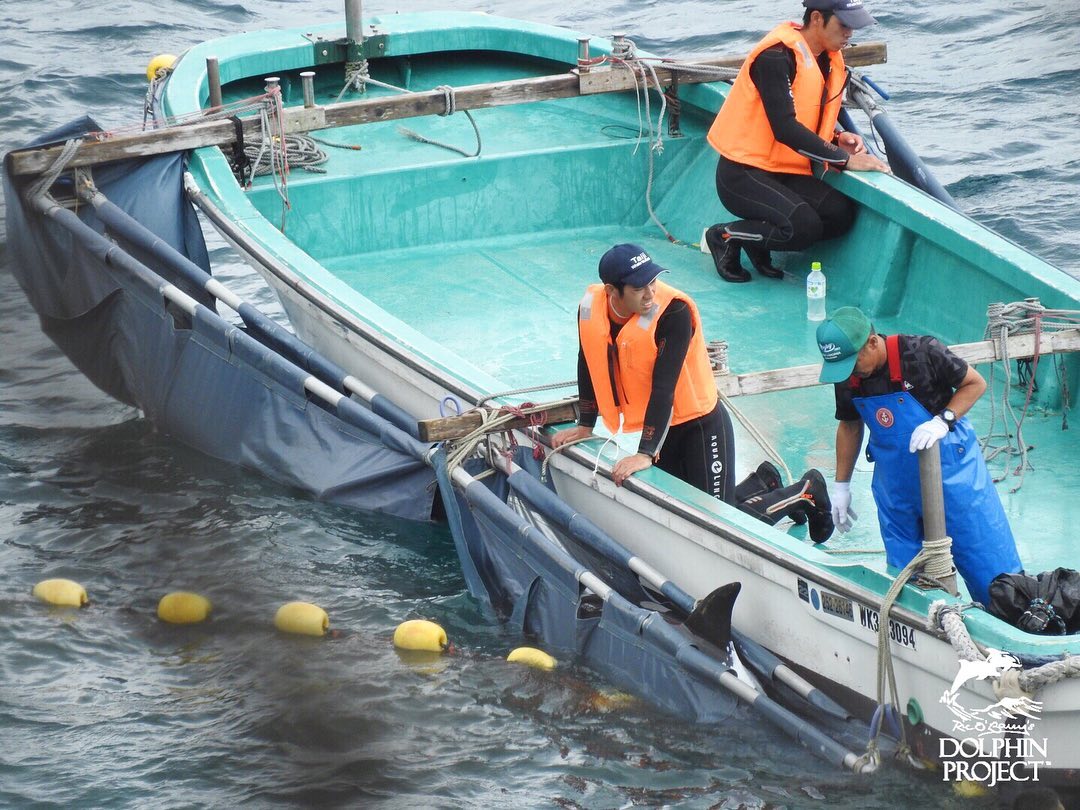 The hunters again captured a group of bottlenose dolphins this morning off Taji. As for the previous two days, these dolphins underwent a very violent selection process and 6 were selected for the captive industry. They were therefore placed in "restraining slings" along the boats and then transferred to pens in front of their group members still locked in the bay. The hunters then returned to push the rest of the group offshore. The hunters again captured a group of bottlenose dolphins this morning off Taji. As for the previous two days, these dolphins underwent a very violent selection process and 6 were selected for the captive industry. They were therefore placed in "restraining slings" along the boats and then transferred to pens in front of their group members still locked in the bay. The hunters then returned to push the rest of the group offshore.
The hunters then returned to push the rest of the group offshore.

Ric O'Barry's Dolphin Project's Cove Monitors follow live and document hunts on a daily basis.
Terrifying catch numbers for the 2018/2019 season:

1166 * dolphins (VS 902 * in the previous season) of 7 different species were caught during this season;
556 (VS 652 in the previous season) were killed for food consumption;
241 were caught to meet the demand of dolphinariums, 135 more dolphins than last year!
The numbers are talking:
if the demand for dolphin meat for food consumption is decreasing, that concerning the supply of dolphinariums is increasing!
It is indeed the captive industry - with its growing demand for "fresh dolphins" - that feeds these killings and allows them to exist.
By funding this practice, the captive industry is taking advantage of the hunt to select individuals for export to local dolphinariums and around the world.
Clearly, without the demand of dolphinaria, the hunt would stop for lack of profitability: a dolphin is selling $ 154 000 to a water park.
The cetacean meat is, for its part, sold off at $ 3 or $ 4 per 100 grams on the stalls of some supermarkets in Taiji.
It is also useful to remember that cetacean meat has contamination levels that constitute a health risk for the consumer.
These figures do not take into account individuals who perish at sea (because they are too weak because of their age or their physical condition) during the tracking of the group or the process of turning towards the shore.
Other figures from previous hunts, see the Dolphin Project statistics.
To act :

Put an end to this barbarism is therefore relatively simple but requires the participation of all internationally: we must encourage the public to no longer go to dolphinarium.
The Ric O'Barry's Dolphin Project - whose leader is Ric O'Barry, main character of the Oscar-winning documentary "The Cove, the Bay of Shame" (distributed in France by Luc Besson) - is an association that does an incredible job around the protection of dolphins in Japan and elsewhere.
Cetacean Network is the oldest association for the protection of cetaceans in France.
In particular, she took part in drawing up the decree of 3 May 2017 regulating dolphinaria in France.
The order was annulled by decision of the Council of State in January 2018 - for procedural flaw - it is now committed to ensure that a new order - free from any procedural flaws - is born.
She has also been working closely with the Dolphin Project, including Ric O'Barry, for more than 15 years, and went to Taiji in early 2018 to document hunts.
Sandra Guyomard (Présidente)
06.22.66.84.67
sandra@reseaucetaces.org
|
 The hunters again captured a group of bottlenose dolphins this morning off Taji. As for the previous two days, these dolphins underwent a very violent selection process and 6 were selected for the captive industry. They were therefore placed in "restraining slings" along the boats and then transferred to pens in front of their group members still locked in the bay. The hunters then returned to push the rest of the group offshore.
The hunters again captured a group of bottlenose dolphins this morning off Taji. As for the previous two days, these dolphins underwent a very violent selection process and 6 were selected for the captive industry. They were therefore placed in "restraining slings" along the boats and then transferred to pens in front of their group members still locked in the bay. The hunters then returned to push the rest of the group offshore.

